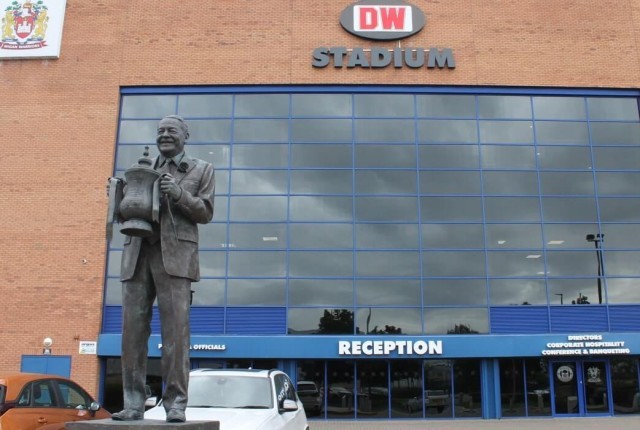Begbies Traynor Case Studies
Latest Case Studies

The business was a group of haulage companies with an annual turnover of approximately £20 million and with approximately 150 employees. The core business was time critical delivery of weekly and monthly periodicals.
Work undertaken
Our team of specialists were approached for advice when the group started facing financial difficulty. The reason for the distressed situation was a lack of cash due to the recent investment in a non-core subsidiary of the group.
Our team went into the company and continued to trade the business. They put in controls and restructured the workforce and operational side of the business to allow time to find a suitable buyer.
We approached the largest debtor and agreed the debt, their ongoing support and negotiated a side agreement, which allowed the business to continue to trade and repay debts.
The business was then advertised for sale which generated a number of interested parties that resulted in two offers being made for the business.
Outcome
Our team successfully identified a suitable buyer for the company and also ensured the group’s largest customer was happy with the potential buyer. This outcome resulted in the bank being paid in full, staff and their jobs saved, and dividend being paid to secured creditors in a number of cases.

A portfolio of 145 residential properties based in Reading with a total bank lend of £35 million. This was a complex case and we were appointed due to a technical breach rather than an arrears breach.
Work Undertaken
The properties were largely tenanted residential properties and our team took control of the rental income prior to considering the optimum exit strategy. The bank debt was serviced from the rental income which was originally circa £130,000 per month. The Bank was expecting a loss of circa £17 million at the date of appointment.
Outcome
We put plans into place for phased disposal and managed the strategy from start to finish. This process was undertaken at the optimum time to take advantage of improving market conditions and, ultimately, the Bank’s loss was eventually estimated to be circa £3 million – representing a huge positive swing for the Bank. This liability was also potentially recoverable via litigation against third party professional advisors.

A firm of property consultants and agents with eight offices across London and employing approximately 250 staff provided a broad range of residential and commercial property consultancy services, including letting, valuations and property management. The Company had a strong overseas arm with particular focus on high value property sales and management in the Middle East.
The Company had seen significant downturn in trading activity as a result of poor market condition in the UK property sector and, in particular, to the central London residential market, to which the company had a significant exposure. The Company had incurred losses of £2.7m over an 11-month period and had a significant funding requirement in respect of future taxation liabilities.
As a result of its poor financial position, the Company was struggling to attract new staff which, in turn, hampered their efforts to attract new revenue streams.
Work undertaken
The business also had a significant pension deficit of over £100m which was increasing year on year due to onerous investment parameters for the scheme. This meant that a significant proportion of the fund had to be invested in gilts, which had shown diminishing returns. At the same time, the scheme provided for an annual 5% increase in payments to pensioners.
Despite lengthy negotiations between the Company, its then advisors and the Pensions Regulator, no agreement had been reached for the restructure of the pension deficit.
Significant management time was being expended seeking resolution to the pension deficit position, taking away management focus from day-to-day trading operations.
As the business was a ‘people business’ where much of the inherent value sat with the partner group, it was vital to manage the partner group throughout the sale process to ensure that no disintegration of the group took place. Our work was carried out against a backdrop of competitor companies attempting to recruit key members of the Company’s partner group, either individually or in silos.
In order to minimise publicity around the marketing campaign and, therefore, minimise the risk of competitors seeking to recruit key staff members, BTG drew up a list of potential purchasers of private equity firms and competitors – each being given access to a secure data room after entering into a suitable non-disclosure agreement.
Throughout this period, BTG liaised closely with the Pensions Regulator, the PPF and the pension trustees to ensure that any sale was in the best interest of the pension scheme, which was anticipated to be by far the largest creditor in the administration.
Outcome
Following a period of marketing and subsequent complex negotiations, a sale of substantially all of the Company’s business and assets was completed.
The business and assets of the Company was sold by way of a pre-pack administration sale to a new private equity investor.
The sale protected in excess of 400 jobs, allowed the smooth transfer of client files and in excess of 1000 client bank accounts to the purchaser and provided a material return to unsecured creditors.
As part of the process, the company exited numerous onerous facilities management contracts which were carried out overseas and which generated losses for the company.

A portfolio with ownership across 11 different entities comprising some 80 units nationwide, with bank debt of £20 million plus. The assets varied widely in quality and value ranging from £90,000 to in excess of £2 million. An initial rent roll of circa £1 million per annum with a large number of vacant units, particularly to the residential parts. There were numerous complex issues including liquidator appointments, landlord compliance matters to residential units, and significant rent arrears.
Work undertaken
Through Eddisons – a Begbies Traynor Group consultancy of chartered surveyors and property management specialists – we assessed the portfolio on a property by property basis and undertook asset management including regularising tenancies and securing deposits. We reduced rent arrears and improved occupancy by securing new lettings and secured lease re-gears to improve investment value. We then implemented a mixed disposal strategy including private treaty, bulk investment and auction sales.
Outcome
This resulted in the bank debt cleared in full and after our initiatives were completed, the rent roll increased by £500,000 and reached £1.5 million per annum.
Case Studies: Administrative Receivership

A portfolio of 145 residential properties based in Reading with a total bank lend of £35 million. This was a complex case and we were appointed due to a technical breach rather than an arrears breach.
Work Undertaken
The properties were largely tenanted residential properties and our team took control of the rental income prior to considering the optimum exit strategy. The bank debt was serviced from the rental income which was originally circa £130,000 per month. The Bank was expecting a loss of circa £17 million at the date of appointment.
Outcome
We put plans into place for phased disposal and managed the strategy from start to finish. This process was undertaken at the optimum time to take advantage of improving market conditions and, ultimately, the Bank’s loss was eventually estimated to be circa £3 million – representing a huge positive swing for the Bank. This liability was also potentially recoverable via litigation against third party professional advisors.

The wealth arm of the Bank appointed receivers over a property which was within a short walking distance of Harrods in Knightsbridge. The property comprised a large house and an exceptionally large garden (for that area of London). The property was in the process of being developed by an individual who has since been charged with a substantial fraud.
Work undertaken
Some initial issues we encountered at the property; the property was in a state of disrepair, including substantial excavations having been undertaken in the garden. The roof works were incomplete, and water was getting into the building in several places. There were no warranties for any of the works undertaken. There were several breaches of planning, including the depth of the excavation.
BTG asked two prominent agents to value the property in its present state. We avoided agents who had been used by the Bank or the owner as we wanted fresh thinking. We were advised that the property was worth between £7 million and £8 million.
We carried out the following:
- secured an overdraft from the Bank and eventually borrowed £3 million
- repaired the roof so that the Council withdrew their enforcement notice
- secured the groundworks as the props which secured the excavation to the rear of the property were considerably beyond their recommended life span
- regularised the planning, with several planning applications. We were questioned on our plans at one of the planning committee meetings for Kensington and Chelsea Council
- engaged with the residents and kept them apprised of our activities and plans
- ensured that adequate public liability insurance was in place
Whilst undertaking the above, we met with several interested parties and secured several offers considerably above the valuations we had obtained.
Outcome
Once all the above works were completed, we decided to put the property on the market with a guide price of £20 million.
We secured a sale at in excess of £30 million to the delight of the Bank and at four times the initial valuations. This has resulted in the Bank being almost paid out in full without the need to enforce its security on other properties.

Kwik Fit operates a chain of tyre fitting and auto care outlets in Kenya. Violence in 2008 following disputed elections and lack of working capital substantially hindered the business, causing trade to decline and the company entering receivership. Duly appointed as receivers we successfully traded the business for some time then concluded a settlement agreement between directors and the bank. The company was returned to its directors to continue trading with redundancies minimised. Our local and international knowledge gave us a powerful position in negotiations resulting in a successful recovery for the bank.
Case Studies: Company Administration

The 133-year-old Keighley Cougars ‘Pride of Keighley’ RLFC club faced a winding up petition from HMRC. Attempts by the club and the Rugby League to secure funding and a repayment agreement with the Crown both failed: the remaining options were winding up or administration. Appointed Joint Administrators we immediately secured a sale of the business and assets to a consortium of local businessmen who are fans of the club. As well as saving the club, the deal secured the future of the playing squad and staff at the ground.

A firm of property consultants and agents with eight offices across London and employing approximately 250 staff provided a broad range of residential and commercial property consultancy services, including letting, valuations and property management. The Company had a strong overseas arm with particular focus on high value property sales and management in the Middle East.
The Company had seen significant downturn in trading activity as a result of poor market condition in the UK property sector and, in particular, to the central London residential market, to which the company had a significant exposure. The Company had incurred losses of £2.7m over an 11-month period and had a significant funding requirement in respect of future taxation liabilities.
As a result of its poor financial position, the Company was struggling to attract new staff which, in turn, hampered their efforts to attract new revenue streams.
Work undertaken
The business also had a significant pension deficit of over £100m which was increasing year on year due to onerous investment parameters for the scheme. This meant that a significant proportion of the fund had to be invested in gilts, which had shown diminishing returns. At the same time, the scheme provided for an annual 5% increase in payments to pensioners.
Despite lengthy negotiations between the Company, its then advisors and the Pensions Regulator, no agreement had been reached for the restructure of the pension deficit.
Significant management time was being expended seeking resolution to the pension deficit position, taking away management focus from day-to-day trading operations.
As the business was a ‘people business’ where much of the inherent value sat with the partner group, it was vital to manage the partner group throughout the sale process to ensure that no disintegration of the group took place. Our work was carried out against a backdrop of competitor companies attempting to recruit key members of the Company’s partner group, either individually or in silos.
In order to minimise publicity around the marketing campaign and, therefore, minimise the risk of competitors seeking to recruit key staff members, BTG drew up a list of potential purchasers of private equity firms and competitors – each being given access to a secure data room after entering into a suitable non-disclosure agreement.
Throughout this period, BTG liaised closely with the Pensions Regulator, the PPF and the pension trustees to ensure that any sale was in the best interest of the pension scheme, which was anticipated to be by far the largest creditor in the administration.
Outcome
Following a period of marketing and subsequent complex negotiations, a sale of substantially all of the Company’s business and assets was completed.
The business and assets of the Company was sold by way of a pre-pack administration sale to a new private equity investor.
The sale protected in excess of 400 jobs, allowed the smooth transfer of client files and in excess of 1000 client bank accounts to the purchaser and provided a material return to unsecured creditors.
As part of the process, the company exited numerous onerous facilities management contracts which were carried out overseas and which generated losses for the company.

Wigan Athletic Football Club was placed into administration by its directors. The Football Club was made up of five companies: Wigan Athletic A.F.C Limited, Wigan Property Holdings Limited, Wigan Football Company Limited, Wigan Sports Management Limited and Wigan Athletic Holdings Limited.
BTG was appointed as Administrators of all five of the above companies.
Work undertaken
This was an incredibly challenging case due to the added pressures of the COVID-19 pandemic which left Wigan Athletic, and other football clubs, unable to take matchday revenues due to the games being ordered to be played behind closed doors.
The initial objectives were to finish the 2019/20 football season, pay the football player and staff wages month by month which were outstanding on appointment, and to find a buyer for the club.
Extensive negotiations took place with the English Football League (EFL) to appeal against their imposed 15-point deduction sanction. BTG sold players to generate funds to clear the football creditors. An appeal was launched, and whilst unsuccessful, BTG were praised by the panel for the level of work achieved in such a short time frame. We successfully finished the season and raised enough money to continue to pay players and staff wages. The team negotiated with the Hong Kong based owners, who agreed to waive their £24m claim in order to assist the rescue of the club.
Outcome
Against all odds, our Partners cleared all football creditors and managed to find a buyer for the club to stave off the threat of liquidation which would have seen an historic community football club disappear from the English Football League.

We were appointed as Joint Administrators of a short-term property finance company that continued trading since being placed into Administration. We proposed a restructuring plan at a sanction hearing to prevent the company from filing for company liquidation.
Due to the joint impact of Covid-19 and Brexit having a detrimental impact on the realisations of the property finance company, the Administrators felt that the continuation of the Administration was no longer a financially viable option.
Work Undertaken
The Joint Administrators sought to use Part 26A of the Companies Act 2006 to propose a restructuring plan to provide an exit route from Administration. This would allow the company to continue as a going concern and place creditors in a better position than in the event of company liquidation.
A restructuring plan is a new restructuring tool introduced in June 2020 into Part 26A of the Companies Act 2006 by the Corporate Insolvency and Governance Act 2020 and is similar in nature to the more established Scheme of Arrangement process, whereby stakeholders are divided into categories for both voting purposes and also in regard to their treatment under the proposal.
However, where the restructuring plan differs is in the allowance for dissenting classes of stakeholders to be bound: this is known as “cross-class cramdown”. The restructuring plan negotiated the claims of five separate classes of creditors: expense, senior secured, junior secured, preferential, and unsecured.
The court was satisfied that secured creditors would be no worse off under the restructuring plan, than in the event of the company liquidation.
Outcome
Despite an attempt to block the proposed restructuring plan by a dissenting creditor, the High Court agreed to cramdown the creditor, ruling in favour of the Administrators.
The restructuring plan for the mid-market company was approved by the High Court in a landmark case undertaken by our Restructuring team and recorded as a defining moment in UK restructuring.
Company Liquidation

A portfolio with ownership across 11 different entities comprising some 80 units nationwide, with bank debt of £20 million plus. The assets varied widely in quality and value ranging from £90,000 to in excess of £2 million. An initial rent roll of circa £1 million per annum with a large number of vacant units, particularly to the residential parts. There were numerous complex issues including liquidator appointments, landlord compliance matters to residential units, and significant rent arrears.
Work undertaken
Through Eddisons – a Begbies Traynor Group consultancy of chartered surveyors and property management specialists – we assessed the portfolio on a property by property basis and undertook asset management including regularising tenancies and securing deposits. We reduced rent arrears and improved occupancy by securing new lettings and secured lease re-gears to improve investment value. We then implemented a mixed disposal strategy including private treaty, bulk investment and auction sales.
Outcome
This resulted in the bank debt cleared in full and after our initiatives were completed, the rent roll increased by £500,000 and reached £1.5 million per annum.

The Charitable Trust was established by residents to provide a framework through which social, economic, and environmental efforts in the local vicinity could be regularly monitored, reviewed, and improved upon.
It fell under the remit of the Charity to preserve, protect, and enhance local amenities and deliver community transport. The Trust was instrumental in coordinating public transport services on behalf of the elderly and disabled members of the local community.
Following suspicions of the viability of the Charity, an independent charitable review was conducted. It concluded that a string of significant financial reporting errors had occurred as a result of poor bookkeeping practices and accounting incompetence, for which the onus allegedly lied on the in-house bookkeeper.
This resulted in a vote to voluntary liquidate the Charity to immediately protect the interests of creditors and service users.
Work Undertaken
Following a referral from the Charity solicitor, we were appointed as liquidators.
Our team undertook a Creditors’ Voluntary Liquidation and a fundamental aspect of the work undertaken was to ensure service continuity of the charitable service. The CVL procedure was actively structured in a way to minimise disruption to service-users and a cessation in the Charities purpose.
Outcome
The Charity entered a Creditors’ Voluntary Liquidation following an agreement between residents. To ensure transport services would continue for the vulnerable members of society, as championed by the Trust, bus service contracts were transferred to a reputable local bus operator.
The Charity Commission also considered that the charitable purpose could continue under their framework.

The mental health service Charity employed 50 employees with a varied set of qualifications and practical skills in the care and mental health industry. The Charity provided support, advocacy, and advice to individuals of all age groups experiencing mental distress and extended these services to their families and carers. The Charity also provided representation services to mental health service users.
Work Undertaken
The directors attributed the failure of the Charity to a lack of operational leadership, control and financial management.
Two core elements contributed to the collapse of the Charity which were identified as a lack of full cost recovery on the contracts which pushed the Charity out of pocket.
The VAT liability being imposed on the Charity also contributed to the financial distress encountered. The Charity had experienced ongoing technical issues around VAT liabilities, including under-declaration and partial exemption.
Outcome
We provided insolvency advice and undertook the Creditors’ Voluntary Liquidation of the mental health Charity as it was no longer viable and could not be recovered.
Our main focus was on supporting the Charity in conjunction with the service commissioners and local authority social services.
We needed to handle the transfer of the remaining services, including a large number of potentially vulnerable clients, with meticulous care to minimise disruption and ensure service continuity.

The children’s safeguarding Charity provided extensive support to children and young people at risk of, or subject to abuse, neglect, and violence. The Charity supported the mental and physical wellbeing of young people by providing a safe environment managed by highly qualified and knowledgeable welfare workers.
Work Undertaken
The Charity depended on a number of local councils for contracts which contributed to a majority percentage of the workload.
Following a series of funding cuts that took place across local councils, the level of placements on offer to the safeguarding Charity significantly reduced. This resulted in a serious shortfall of contracts and income for the children’s safeguarding Charity.
Outcome
We were appointed as liquidators when the Trustees decided that the Charity was no longer viable due to the financial repercussions that stemmed from the funding cuts that took place at local councils.
While undertaking the voluntary company liquidation procedure and handling two properties owned by the Charity, we experienced a number of complexities.
This included settling outstanding affairs with a secured lender following a substantial shortfall of money. During the liquidation process, we were required to source a suitable buyer to complete the sale of one company. The transfer of another company to another unconnected Charity at the behest of the funder was also executed.
We completed the Creditors’ Voluntary Liquidation and ensured that the essential safeguarding services for young people remained accessible throughout the process.
Company Voluntary Arrangement (CVA)

The large recruitment company had a £22 million turnover and engaged over 1,000 staff.
Work Undertaken
The company accumulated a substantial HMRC liability due to the misapplication of VAT.
Following an attempt to negotiate payments with HMRC, the company failed to arrive at an agreement. This led to HMRC issuing a winding up petition to force the business into compulsory liquidation as the business was unable to settle its debts.
We were appointed to advise on how to respond to the winding-up petition and stabilise the business for both the short-term and long-term.
To avoid compulsory liquidation, the business was required to act fast within a short window. We proposed entering a formal payment plan in the form of a CVA to tackle HMRC arrears and continue trading without creditor pressure.
We assisted the directors of the company in preparing cash flow projections to support the CVA proposal. For the CVA to be accepted, we analysed income and expenditure to propose a payment arrangement that was sustainable. We liaised with HMRC on behalf of the debtor and the CVA was accepted.
Outcome
The CVA enabled the recruitment company to pay HMRC in affordable instalments and reduce the pressure on company cash flow.
The company was rescued from the winding up petition and pending liquidation. Over 1,000 jobs were safeguarded, and we developed a robust plan for the company to adhere to in order to ensure its long-term survival and viability.

The residential nursing care home provided long-term and respite care to 38 elderly patients and specialised in supporting individuals living with Dementia. The locally renowned care home operated since the mid-1900s and had an exemplary record for delivering exceptional services tailored to the elderly at all stages of life.
The care home started accumulating losses and soon plunged into financial distress as it no longer had the funds necessary to cover day-to-day maintenance costs or pay creditors.
To continue the delivery of essential care services to elderly service users, we were approached to help source a suitable solution to the financial problems encountered by the veteran nursing home.
Work Undertaken
We were appointed by the Trustees on the recommendation of the Bank to seek a suitable insolvency procedure as ongoing losses in the nursing home could not be funded by the overdraft.
Outcome
Our team undertook a Company Voluntary Arrangement (CVA) which allowed us to enter negotiations with creditors to revise repayment terms with a view to reduce the financial pressure on the business and preserve viability.
The CVA resulted in the care home being traded and subsequently sold to a suitable party for fair market value.
Following the CVA, all creditor debts had been paid off in full and the remaining balance was paid to the nominated Charity which had similar aims and objectives to the nursing home.

The limited company traded profitably as civil engineers since its incorporation, however, it arrived at a crossroads after accumulating an unexpected bad debt.
Work Undertaken
A large unrecoverable debt had a dramatic adverse effect on the cash flow of the company and its ability to fulfil liabilities, resulting in the company becoming contingently insolvent.
As the business no longer had enough funds to pay creditors, immense pressure was placed on the company to make repayment. Without professional guidance, the business was at high risk of facing legal action in the form of a winding up petition, resulting in compulsory liquidation.
Under professional recommendation, the company entered a Company Voluntary Arrangement (CVA) as the best course of action to allow additional time for the debts of the company to be repaid.
During the implementation of the CVA, multiple modifications to the arrangement were proposed by several creditors which involved appointing two members of our team to act as Joint Supervisors of the CVA.
Outcome
Although we would ordinarily deal with a CVA from the outset, requests from creditors resulted in our appointment where another Insolvency Practitioner firm would have naturally expected appointment.
We supervised the CVA procedure from the date of approval and oversaw the collection of monthly contributions & agreement of creditor claims.

Prior to the Covid-19 pandemic, the group was an award-winning successful airport lounge business, operating across 13 sites in the UK and Australia. Following the worldwide restrictions on travel as a result of the pandemic, the group accumulated a bank debt of £10m, Private Equity sponsor debt of £18m, lease and other guarantees which ran into several millions of pounds. Coupled with a complex group structure, the situation was becoming untenable.
Work Undertaken
Our team of specialists worked with all stakeholders to develop a Company Voluntary Arrangement (CVA) strategy where key parts of the Group were ringfenced (e.g., guarantees given in relation to underperforming divisions of the Group). New funding was injected to support the performing divisions of the Group through a Covid recovery plan, whilst strategic sale options were explored.
As part of the CVA strategy, the Private Equity sponsor wrote off significant debt and the bank participated in the voting process. This is understood to be the first ever instance of a clearing bank voting in a CVA by valuing their security.
Outcome
We assisted the Group in their sale strategy post CVA which culminated in two sales (Australian sale was completed in May 2021 and the UK sale completed in July 2021). This resulted in the successful early completion of the CVA, and a repayment of the bank bridging facility and a significantly enhanced recovery on their £10m versus the alternative faced at the start of the process.
The sale processes were particularly complicated as there was a need to decouple various commercial agreements, arrange for various landlord approvals, and deal with warranty arrangements.
We are now in the process of finalising the wind down of the various legacy companies which were not acquired in the process.
Pensions

The major international company was a preferred product supplier to the construction and building industry with operations on a global scale. It had a large-scale UK subsidiary generating revenue in excess of £200 million which was well established.
Work Undertaken
The UK subsidiary had a substantial defined benefit scheme with a deficit running into many millions of pounds.
Our Pensions Advisory team undertook a Covenant Review of the internationally renowned construction supplier to establish the Scheme Employer’s ability to fund the deficit and establish the period during which it could be repaid.
The Covenant Assessment also assessed the quality of the Group’s earnings and the long-term financial forecasts by weighing the likelihood of these earnings running into the future. It is a pre-requisite of the Pensions Regulator to understand existing and future financial capabilities and the likely outcome for creditors in the event of insolvency.
Outcome
The Covenant Review concluded that the Group was sufficiently strong to meet its pension obligations based on its current balance sheet and ongoing trading prospects.
The Review also highlighted the extent to which the business was materially benefitting from trading carbon credits, as opposed to the returns from its core business.
The report indicated the need for the Trustees to take into account the future of the carbon credit market, as well as the construction industry.

Background: The Trustees of the company’s smaller defined benefit pension scheme with assets of £16 million were seeking to establish the ability of the scheme employer to meet deficit contributions to the scheme and to what extent contingent asset support might be available recognising that the employer was a not for profit organisation and the parent company of a group structure including trading activities owned by charities none of which were participating employers.
Instructions: Our instructions were to carry out a covenant assessment of the scheme employer identifying its relationships with other group entities and the risks they posed to the scheme and opportunities they might also provide for additional cash and contingent assets in support of the scheme.
Action: We carried out a covenant assessment reviewing recent financial performance and future projections assessing the level of free cash flow available going forward and reviewed the group structure identifying for the Trustees the risks and opportunities arising from the employer’s relationship with other group members. We also identified some proposed sales of surplus assets which would give rise to significant cash receipts in excess of group requirements which therefore could be available to eliminate the current deficit in its entirety.
Follow up: Although the covenant assessment was adequate in relation to the size of the deficit we recommended the Trustees consider seeking a charge over the surplus assets pending their disposal and seeking agreement from the employer to eliminate the deficit upon realisation of the assets to be disposed of.
Restructuring

The business was a group of haulage companies with an annual turnover of approximately £20 million and with approximately 150 employees. The core business was time critical delivery of weekly and monthly periodicals.
Work undertaken
Our team of specialists were approached for advice when the group started facing financial difficulty. The reason for the distressed situation was a lack of cash due to the recent investment in a non-core subsidiary of the group.
Our team went into the company and continued to trade the business. They put in controls and restructured the workforce and operational side of the business to allow time to find a suitable buyer.
We approached the largest debtor and agreed the debt, their ongoing support and negotiated a side agreement, which allowed the business to continue to trade and repay debts.
The business was then advertised for sale which generated a number of interested parties that resulted in two offers being made for the business.
Outcome
Our team successfully identified a suitable buyer for the company and also ensured the group’s largest customer was happy with the potential buyer. This outcome resulted in the bank being paid in full, staff and their jobs saved, and dividend being paid to secured creditors in a number of cases.

A multi-let, commercial investment comprising 80,000 sq ft of industrial space, with bank debt of £2 million. A very poor-quality building in a deprived Birmingham location which was approximately 60% occupied with a rent roll of circa £105,000 per annum. The site was highly management intensive and had numerous repair issues falling under landlord’s responsibility (few service charges in place). These dilapidations were a cause of real concern.
Work undertaken
Through Eddisons – a Begbies Traynor Group consultancy of chartered surveyors and property management specialists – we were able to halt a tenant exodus and restore confidence by undertaking essential repairs and organising nightly security patrols. We implemented an intensive management strategy to ensure that rents were collected in full. We commissioned multiple surveys (asbestos, gas, electric) to ensure health and safety and insurance compliance and secured new lettings, significantly increasing the investment value.
Outcome
Eddisons’ effective management and lettings of the site improved value from £700,000 to achieve a sale of £1.215 million. In addition to this, we secured further income through rents and the insurance claim which together represented a 100% uplift on the initial EOS. Eddisons’ insurance team dealt also dealt with a fire damage issue and secured full value insurance repayments for damaged parts (£200,000).

We assisted a profitable wholesale business that was experiencing adverse cash flow issue due to:
- Incorrect working capital product (overdraft)
- Prohibitive lease, with pending exit and dilapidations liability
- Lack of accounting support for directors to make informed decisions
Work undertaken
Our team of specialists were engaged to facilitate a refinance and support the company through the transition. We also introduced external accountants to assist the existing book keeping function.
Outcome
An invoice finance provider paid out to refinance the bank and provide cash to assist with a change of location.
It was recommended that they engage a new accountant to assist with the implementation of the invoice finance facility and to maintain management accounts, with a view to providing proactive advice.

The business is a market-leading milkshake bar with, at the time, 55 owned and franchised stores across the UK and a small overseas presence. From establishment in 1999, the company grew to a £4.6m turnover business. Due to the downturn in the economy, the decline in the retail market and lack of available equity investment, the business had to be restructured via an immediate sale out of Administration to exit loss-making outlets.
Work undertaken
Our team of restructuring specialists advised the company and the bank pre-appointment, and involved our Corporate Finance team in exploring accelerated mergers and acquisition (AMA) options. The next stage was to negotiate with interested parties for a sale through Administration and assist the directors with pre-Administration trading and control of the overdraft.
This was a complex transaction with numerous challenges which led to a successful sale that subsequently saved the outlets. Predictable challenges included the need to resolve a sale with competing purchasers against an extremely pressing timescale before the Notice of Intention to Appoint lapsed.
We managed to preserve the goodwill of the trading business and manage the landlords while managing the directors’ own objectives vis-à-vis the IPR being owned outside of the bank’s security against their personal guarantee position which complicated the eventual sale.
Our Media Centre
Read our latest news, expert opinion pieces and articles covering the the professional and financial sector.



